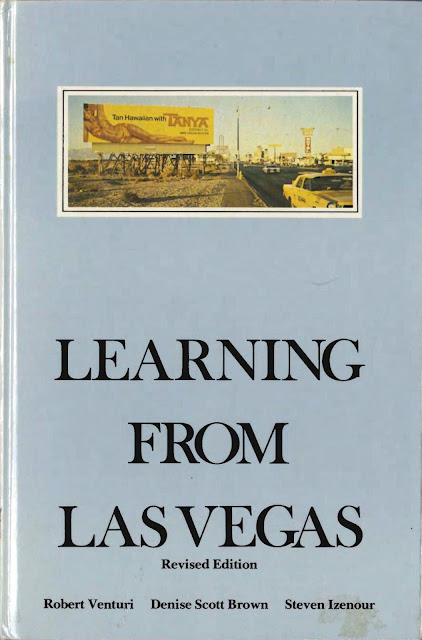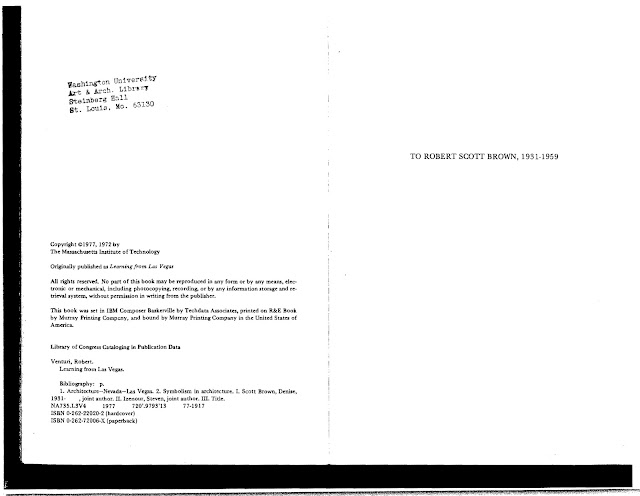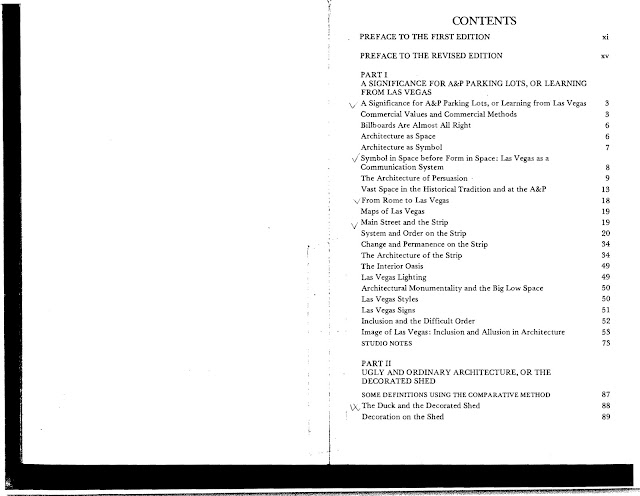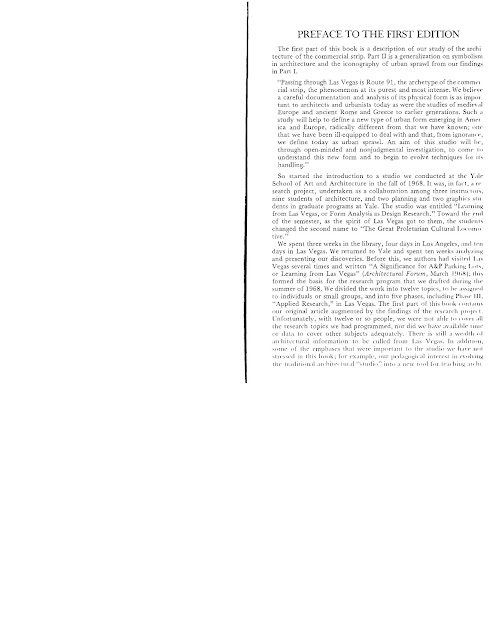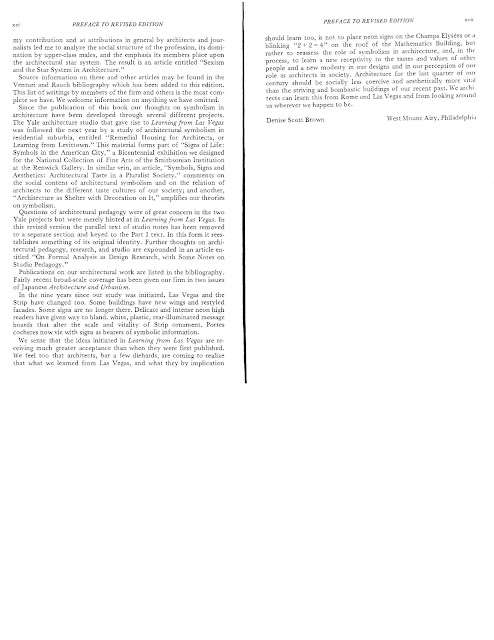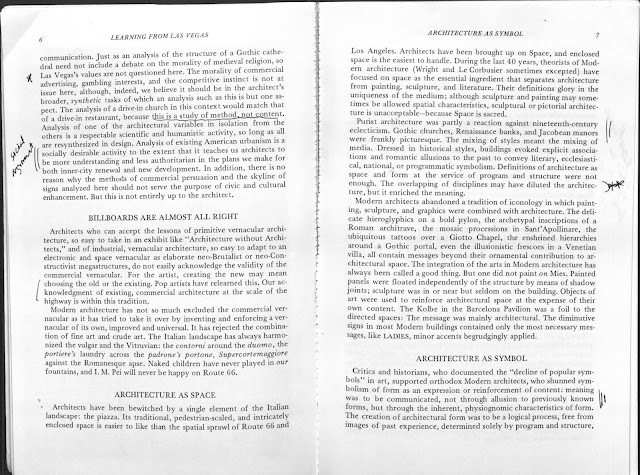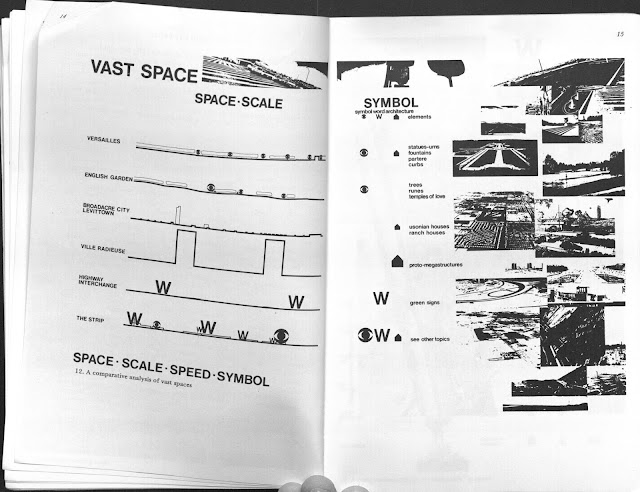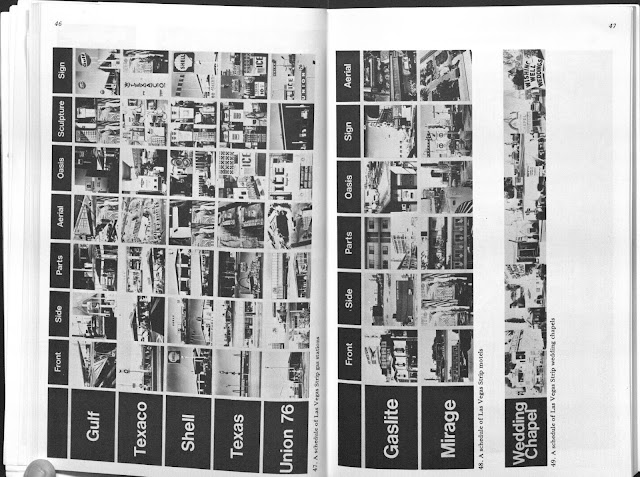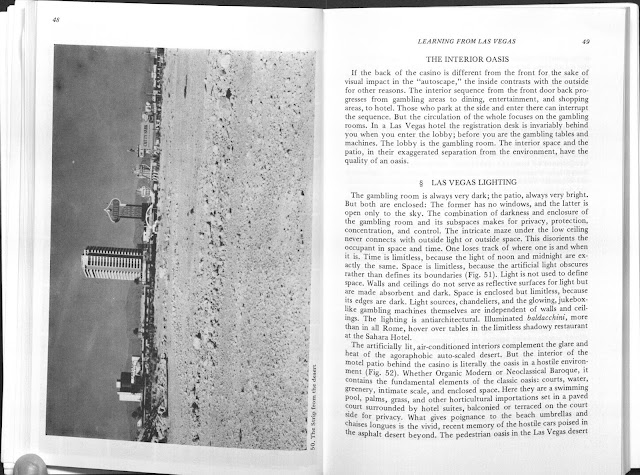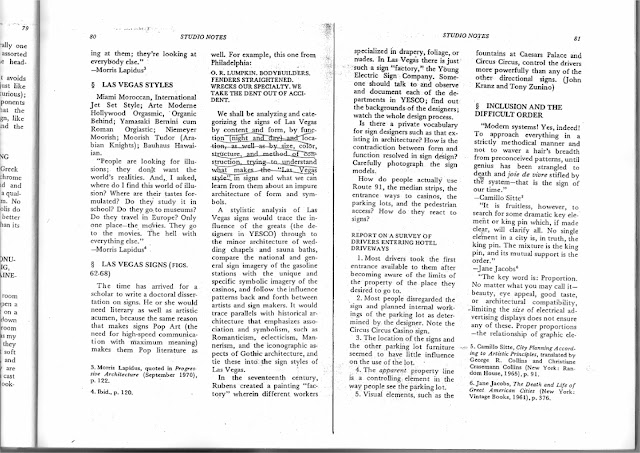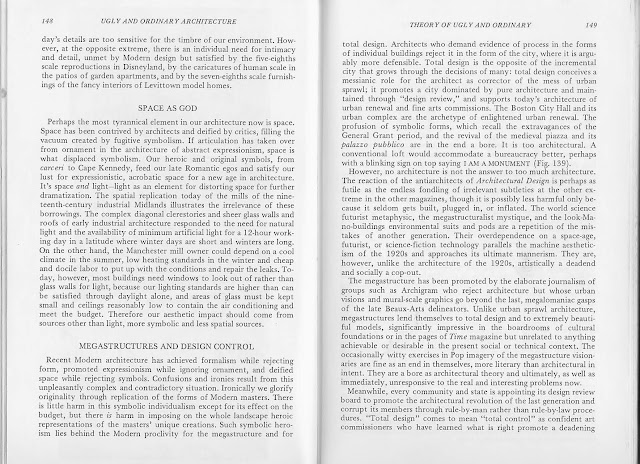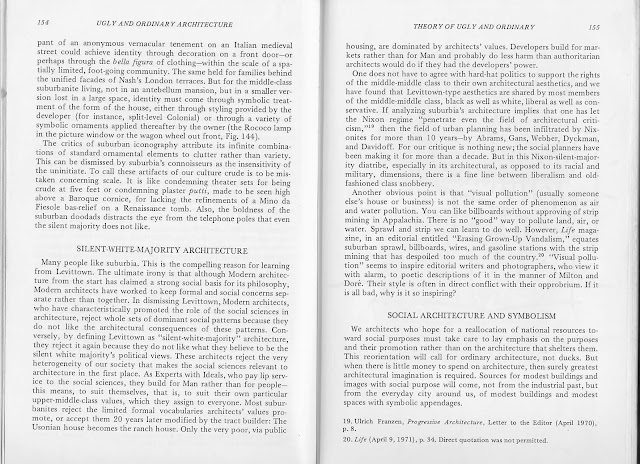Learning from Las Vegas is a 1972 book by Robert Venturi, Denise Scott Brown, and Steven Izenour. The book was regarded as a "non-city" and as an outgrowth of a "strip", along which were placed parking lots and singular frontages for gambling casinos, hotels, churches and bars. Venturi and Scott Brown studied various aspects of the city, including the commercial vernacular, lighting, patterns, styles, and symbolism in the architecture and they created a taxonomy for the forms, signs, and symbols they encountered. The result was a critique of Modern architecture, demonstrated most famously in the comparison between the "duck" and "decorated shed." The "duck" represents a large part of modernist architecture, which was expressive in form and volume. In contrast, the "decorated shed" relies on imagery and sign as such Modern buildings became mute and vacuous, especially when built for corporate or government clients. Learning from Las Vegas helped foster the postmodernism art movement.

